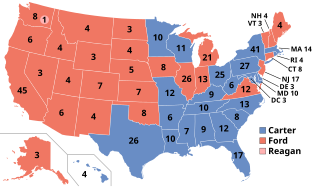
The vice president of the United States is the second-highest officer in the executive branch of the U.S. federal government, after the president of the United States, and ranks first in the presidential line of succession. The vice president is also an officer in the legislative branch, as president of the Senate. In this capacity, the vice president is empowered to preside over Senate deliberations, but may not vote except to cast a tie-breaking vote. The vice president is indirectly elected together with the president to a four-year term of office by the people of the United States through the Electoral College.

The 1900 United States presidential election was the 29th quadrennial presidential election, held on Tuesday, November 6, 1900. In a re-match of the 1896 race, Republican President William McKinley defeated his Democratic challenger, William Jennings Bryan. McKinley's victory made him the first president to win consecutive re-election since Ulysses S. Grant had accomplished the same feat in 1872.

The 1976 United States presidential election was the 48th quadrennial presidential election. It was held on Tuesday, November 2, 1976. Democrat Jimmy Carter of Georgia defeated incumbent Republican President Gerald Ford from Michigan. Carter's win represented the lone Democratic victory in a presidential election held between 1968 and 1992.
A running mate is a person running together with another person on a joint ticket during an election. The term is most often used in reference to the person in the subordinate position but can also properly be used when referring to both candidates, such as by saying Joko Widodo and Jusuf Kalla, and Uhuru Kenyatta and William Ruto, were running mates in relation to the presidential elections held in Indonesia in 2014 and Kenya in 2013 respectively.
The United States presidential line of succession and the United States laws governing succession to the presidency have, on many occasions, been incorporated into the storyline by creators of fiction. Several novels, films, and television series have examined the presidential line of succession and speculated on how it might be implemented in unusual circumstances. The following are some examples of fictional portrayals of United States presidential succession:

The 1980 National Convention of the Republican Party of the United States convened at Joe Louis Arena in Detroit, Michigan, from July 14 to July 17, 1980. The Republican National Convention nominated former Governor Ronald W. Reagan of California for president and former Representative George H. W. Bush of Texas for vice president.



